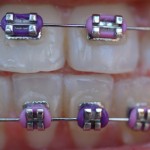
While orthodontists have been moving teeth by applying forces to teeth for many years the exact biological mechanisms that determine tooth movements are not fully understood. How much force should be applied to teeth to achieve the maximum or near maximum response without side effects such as external apical root resorption uncontrolled tipping, and increased hyalinisation is a question that has seen much interest previously. Recently a number of human clinical studies have undertaken
The aim of this review was to identify the optimal force magnitude for achieving orthodontic tooth movement.
Methods
Searches were conducted in the Medline, Embase, Cochrane Library, CINHAL and the Web of Science databases with no date or language restrictions. Three reviewers selected studies with each study being assessed by 2 reviewers. Data was extracted using a customised form with risk of bias being assessed using the Cochrane domain-based tool. Randomised controlled trials (RCTs) and randomised split-mouth studies of fixed appliances using a specified force were considered. The primary outcome was rate of achieving orthodontic tooth movement (OTM) with external apical root resorption (EARR), pain and influence of growth as secondary outcomes. Because of study heterogeneity and poor reporting, a narrative summary was presented.
Results
- 12 studies (2 RCTs, 10 randomised split-mouth studies) were included.
- 1 study was considered to be at low risk of bias, 10 at unclear risk and 1 at high risk.
- The force magnitude ranged between 18- 360 cN and was reported in all 12 studies. A summary of the rate of OTM at 4 different force group.
| Force | Rate of OTM |
| Low (<100 cN) | 0.23 and 0.44 mm/wk |
| Moderate (100 cN-150 cN) | 0.16 and 0.47 mm/wk |
| High (150 cN-250 cN) | 0.1 and 0.46 mm/wk |
| Very high (250 cN-400 cN | 0.34 and 0.49 mm/wk |
cN = centinewton (one hundredth of a Newton); 1cN = 1.02 grams force.
One newton is the force needed to accelerate one kilogram of mass at the rate of one metre per second squared in the direction of the applied force.
- EARR was assessed in two studies from the same author group with no root resorption being detected with forces between 100 cN-150 cN.
- Pain was assessed in one study that found a significant difference between the 50 cN and 150 cN groups at 24 hours with the 50 cN group showing less pain over a 2-month period.
Conclusions
The authors concluded: –
There is weak to moderate evidence showing that forces ranging between 50 cN and 100 cN are optimal for the rate of OTM, patient comfort, and potentially exhibit fewer side effects.
No sound conclusions can be drawn regarding EARR and pain because of the limited amount of evidence.
Weak, but statistically significant evidence, suggests that growth increases the rate of OTM.
Based on the results of this systematic review, more robust and well-designed RCTs are needed to enable a future meta-analysis to identify an optimal force range.
Comments
The authors have adopted a standard methodological approach pre-registering their protocol on the PROSPERO database and undertaken an unrestricted search of a good range of databases. The sample sizes of the included studies are small ranging from 12 to 56 with a majority including fewer than 20 patients. 10 of the included studies are split-mouth and while the forces are applied directly to individual teeth it could be argued that there may be the potential for cross-over effects. Only one of the included studies was considered to be at low risk of bias. So while the findings suggest that the optimal force for tooth movement with the fewest side effects lies in the 50 cN and 100 cN (50-100gram force) range the quality of the available evidence is low so should be viewed cautiously.
For an orthodontist view on this review see Kevin O’Brien’s blog.
Links
Primary Paper
Theodorou CI, Kuijpers-Jagtman AM, Bronkhorst EM, Wagener FADTG. Optimal force magnitude for bodily orthodontic tooth movement with fixed appliances: A systematic review. Am J Orthod Dentofacial Orthop. 2019;156(5):582–592. doi:10.1016/j.ajodo.2019.05.011
Other references
Kevin O’Brein’s blog -What force should we apply for orthodontic tooth movement?

Good evening,
I have had recent tooth restoration which has moved my teeth. I have had orthodontics work completed mid 2019. With a wire placed lower teeth I have had movement after a tooth restoration procedure. My lower teeth are no longer symmetrical. The dental restoration took 1 and half hours for one tooth. The force and pressure was incredible and the dentist refuses responsibility. Can a tooth restoration force teeth to move?